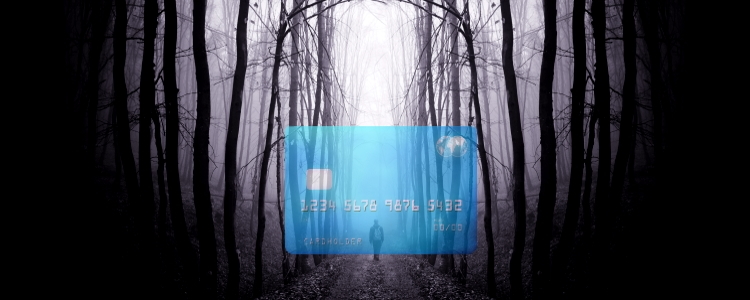Your credit reports can make you transparent to a lender, but if there’s nothing listed on them, you’re considered a credit ghost. We cover how this impacts your ability to take on new credit, and tips on how to build up your ghostly, empty credit reports.
Spooky Scary Credit Ghost
 In lender-speak, you may be called a credit ghost if you have a thin or nonexistent credit file, or you haven’t had many or any accounts listed on your credit reports for 10 years or more. Having a thin file simply means your credit reports are literally thin – if they were to be printed out, that is.
In lender-speak, you may be called a credit ghost if you have a thin or nonexistent credit file, or you haven’t had many or any accounts listed on your credit reports for 10 years or more. Having a thin file simply means your credit reports are literally thin – if they were to be printed out, that is.
If you’ve never taken on an installment loan or a credit card, it can make lenders hesitant to approve you for new credit. This is largely because you don’t have a recorded history of how you’ve handled repaying credit.
As a credit ghost, your credit score is likely lower than average. Having little to nothing on your credit reports typically leads to a lower credit rating. Your FICO credit score – the most common credit-scoring model used by lenders – is a three-digit number ranging from 300 to 850.
The higher your credit score, the better credit opportunities you typically have. But, you can only gain a higher credit score by using credit. This shows up on your credit reports as payment history, which is the biggest aspect of your FICO credit score.
So, how do you build up a ghostly credit score that isn't great? By building payment history! It can be difficult to start your credit history when lenders are hesitant to approve you for new credit, but don’t worry, every borrower has to start somewhere.
Credit Ghosts and the Impact on New Credit
While many lenders are uncertain of credit ghosts, there are some scenarios that they generally take into consideration. For example:
Say you’re fresh out of school, you’ve never had any credit before, but you have a solid work history and no negative marks on your credit reports. While you’re considered a new borrower with a thin file, your stable work history is something lenders like to see.
Stability is a key trait that bad credit auto lenders look for in your employment history, residency, and credit reports. While this scenario may seem specific, it’s rather common for recently graduated high school or college students. Certain lenders may be willing to approve you in a similar situation, but maybe not in every case. Lenders can vary in their requirements.
However, if you’re relatively new to the workforce and you’re a credit ghost, you may have to be strategic in how you start your credit history.
Tips to Bring Your Credit History to Life
There are quite a few options to choose from that can help get your credit history rolling:
- Credit reporting services. If you’re paying bills that aren’t reported, like your electric bill, phone bill, rent, or even streaming services, you can link up with a reporting service to start getting those payments recorded on your credit reports. Some services are free, while others require a fee, but this can be a great way to get things started – if you’re paying your bills on time.
- Secure credit card. A secured credit card is a little different than a traditional one. Unlike a traditional credit card, you must pay a deposit to get it started. Most often, your credit card limit is the same amount as your required deposit. If you miss payments on the card or close the account when you have a balance, your deposit covers what you owe. Secured credit cards are generally easier to get approved for compared to regular credit cards, so many no credit borrowers start here.
- Credit builder loan. This type of loan is designed to help borrowers start their credit history and save money. You pay off the loan in installments, and the money gets deposited into a savings account – and all of it is yours when the loan is paid off. You’re essentially depositing money into a savings account, but the difference is that these are considered payments on a loan, so they’re reported to the credit bureaus and you can start a repayment history to build your credit.
- Pay your bills on time. Another way to start your credit history off with a boom is to make sure that all other bills you have are paid on time. If you don’t have any loans or credit cards on your credit reports, make sure that you don’t get negative or collection accounts listed on there that can bring your ghostly reports down.
Driving Your Way to Better Credit
While having a lower credit score can make getting approved for credit a little difficult, it’s very common for first-time borrowers to start their credit history with a car loan.
Auto loans are installment loans, which impact many different parts of what makes up your credit score: payment history, credit age, credit mix, and more. By completing a car loan and establishing payment history that’s usually years long, it’s a great way to start your credit history if you stay current on the payments.
However, many ghost borrowers tend to have lower credit scores, which can make it hard to find a lender that can work with them. Here at Auto Credit Express, we’ve got scary good connections to dealerships all over the country, and we want to look for one in your area.
We’ve created a network of dealers that are signed up with bad credit auto lenders that are equipped to assist no credit and bad credit borrowers. Get matched to a dealership in your area by completing our car loan request form. It’s totally free, carries no obligation, and we’ll get to work for you right away.
















